As global demand increases for qualified optical technicians and other photonics workers, the recruitment and training programs pioneered in upstate New York offer a model for other regions.
JAMES SCHLETT, CONTRIBUTING EDITOR
Ten years ago, Tony Amarel’s recruitment firm in Rochester, New York, rarely heard from clients who were willing to pay a fee to fill optical technician positions. But by 2021, the six-county Rochester metropolitan area saw the number of jobs in its local optical equipment and lens manufacturing sector increase by 12.5% to 1293 — more than double the national average growth rate of 5.7%,
according to employment data from the U.S. Bureau of Labor Statistics (BLS) and New York State Department of Labor.
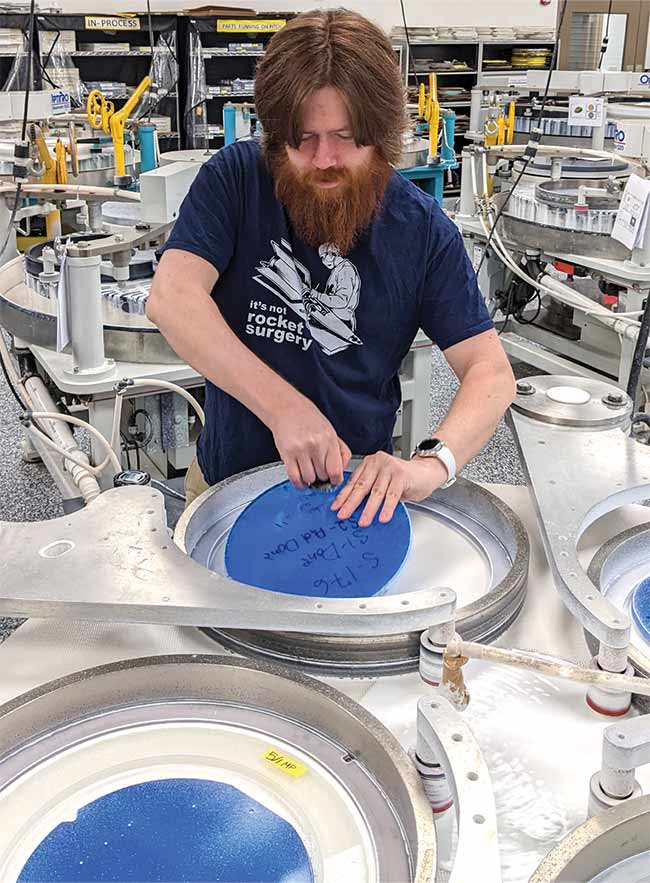
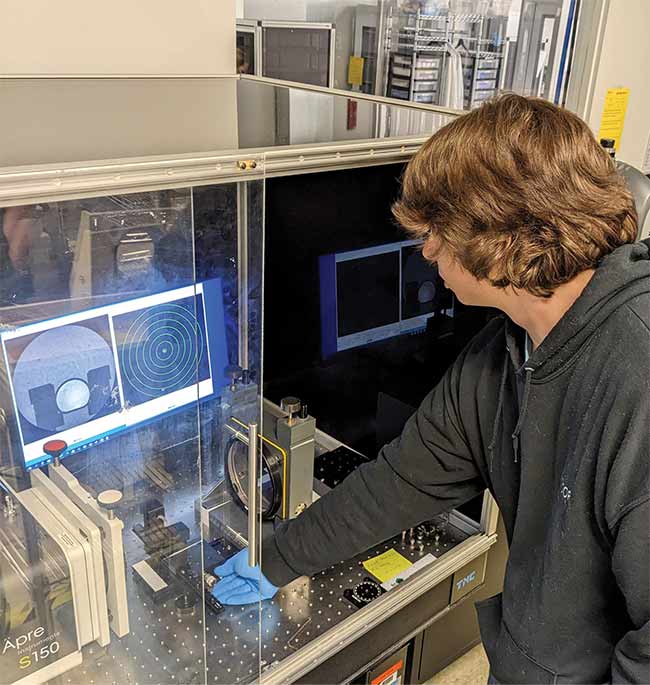
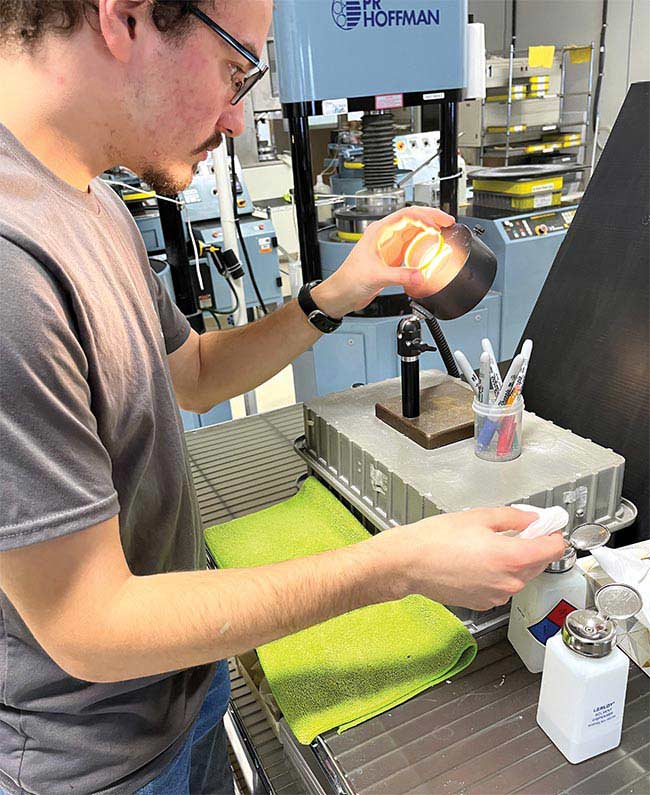
Optical technicians working at Sydor Optics. Sydor has helped maintain its optics manufacturing workforce by sponsoring apprenticeships since 2020. Courtesy of Sydor Optics.
Around 2015, the U.S. Department of Defense awarded a $110 million grant that established Rochester as the headquarters of the American Institute for Manufacturing Integrated Photonics (AIM Photonics). The initiative aimed to create hundreds of jobs and signaled a new era for the Rochester area’s optics industry, which included legacy manufacturers such as Eastman Kodak and Bausch & Lomb.
“Today, we consistently get requests for our services in finding experienced optical technicians,” said Amarel, president of OpticsProfessionals.
Workforce education
Two years after the AIM Photonics designation, Monroe Community College (MCC) in Rochester revamped its Optical Systems Technology program to further spur recruitment for the local sector. Supporting this initiative was a $550,000 Advanced Technological Education grant from the U.S. National Science Foundation in 2017. A $4.4 million U.S. Department of Defense Office of Naval Research grant in 2019 further accelerated the program’s growth, as did corporate support from the Corning Foundation, Sydor Optics, Thorlabs, and others, according to Alexis Vogt, the endowed chair and associate professor of MCC’s Optical Systems Technology program.
In 2022, MCC awarded 46 associate degrees in applied science — triple the size of its first cohort of graduates in 2019 — and its latest batch of technicians achieved a 100% job placement rate. Enrollment more than doubled again this year to reach more than 110 students. Thirty percent of those students are female, and 28% are people of color.
The accelerating success of MCC and the larger Rochester community not only serves as a national model for training a photonics workforce but also supports the spread of apprenticeships that help to upskill those workers.
Sydor Optics, a nearly 60-year-old Rochester manufacturer of plano optics, such as wafers, windows, filters, mirrors, and optical flats, currently employs 11 optical technicians and aims for a quarter of its workforce to hold that position. The company expects its optical technician candidates to have had some introduction to optical fabrication as well as hands-on experience. It found, however, that many candidates have not been introduced to automated double-side lapping and polishing equipment.
“Prior to 2017, it was rare to find candidates with an optical background,” said James Sydor, Sydor Optics owner and chairman. “Since the MCC program started, we have the opportunity to select better-qualified candidates.”
L3Harris Technologies, a Rochester defense contractor and manufacturer of large-scale custom optics, has also been building its relationship with MCC’s Optical Systems Technology program as it prepares to launch multiple new programs. As of May 2023, L3Harris did not have any optical technician openings, but the company expects that to change in the next six to nine months as it seeks staff to support upcoming programs, according to Irene Lockwood, a senior communications manager for L3Harris.
And it is not only Rochester employers who are hiring MCC-trained optical technicians. Program graduates have found work through paid internships and jobs at Amazon, Collins Aerospace, Danbury Mission Technologies, Lockheed Martin Missiles and Fire Control, MIT Lincoln Laboratory, and others, according to Vogt.
“As the optics industry has evolved, so too has the MCC optics program,” she said. “Industry guidance helped inform which equipment would best prepare students to meet current and future optics demands, and enabled MCC to revise its curriculum to better align with the knowledge and skills employers sought.” For example, input from potential employers prompted the MCC Optical Systems Technology program to purchase and install a diamond turning lathe and create an innovative 40-hour diamond turning workshop.
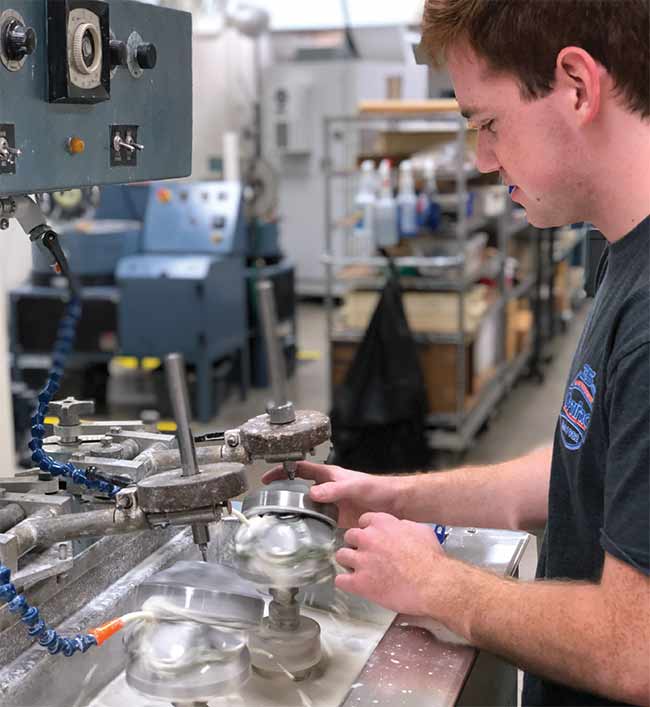
A Monroe Community College student practices conventional polishing. Courtesy of Monroe Community College.
Amarel at OpticsProfessionals called MCC’s optical technician program a tremendous asset to the industry in and beyond upstate New York. However, he added that it remains comparatively harder to find and hire optical technicians because demand for them is accelerating even more quickly than MCC’s ability to supply these workers. Amarel noted that it is easier to recruit laser technicians than optical technicians — especially optical technicians who can fabricate components — because there are more opportunities to learn skills for the former than the latter.
Optics hubs
Using the MCC Optical Systems Technology program as its model, the American Center for Optics Manufacturing (AmeriCOM) has established regional industrial workforce development ecosystems elsewhere in the U.S. According to Vogt, many build on college-level certificate and degree programs such as those run by Front Range Community College in Boulder, Colorado; Sussex County Community College in Newton, New Jersey; and Valencia College in Orlando, Florida. Pima Community College in Tucson, Arizona, is also working with regional photonics hubs, MCC, and AmeriCOM to develop noncredit optics courses that it plans to offer this fall, said Greg Wilson, Pima’s dean of applied technology.
According to Amarel, workforce recruitment tends to take longer outside of the established optics hubs. Based on fourth quarter 2021 BLS data, the metropolitan areas with the most optical instrument and lens manufacturing jobs are centered around Boston (2308), Rochester (1349), and Portland, Oregon (1051). Several smaller metros that field fewer optics jobs nevertheless number positions far above the national average, based on their location quotient. Where 1.0 represents the national average location quotient for a given industry, for example, the Boulder metropolitan area registers a quotient of 22.9 for optical instrument and lens manufacturing. The Santa Rosa, California metropolitan area weighs in with a location quotient of 22.5, followed by Rochester at 19.3.
Higher job numbers alone are not enough to attract talent to a region. The number of employers in an area also carries significant weight. Amarel observed that highly qualified candidates often hesitate to relocate to regions that lack multiple photonics companies as it makes them more reliant on a single employer.
Apprenticeships
Business is growing for LaCroix Precision Optics, a manufacturer of spherical, aspherical, plano, and custom-coated optics in Batesville, Arkansas. But because the company finds itself in an area with few photonics employers, recruiting qualified workers can be challenging.
According to the BLS data, the entire state of Arkansas only has four optical equipment and lens manufacturing companies. Together, they employ 108 workers spread across four of the state’s 75 counties. As of May, LaCroix had hired 19 photonics technicians this year. Fourteen were still working and the manufacturer was interviewing for three positions. Most of the company’s new hires have no prior manufacturing experience.
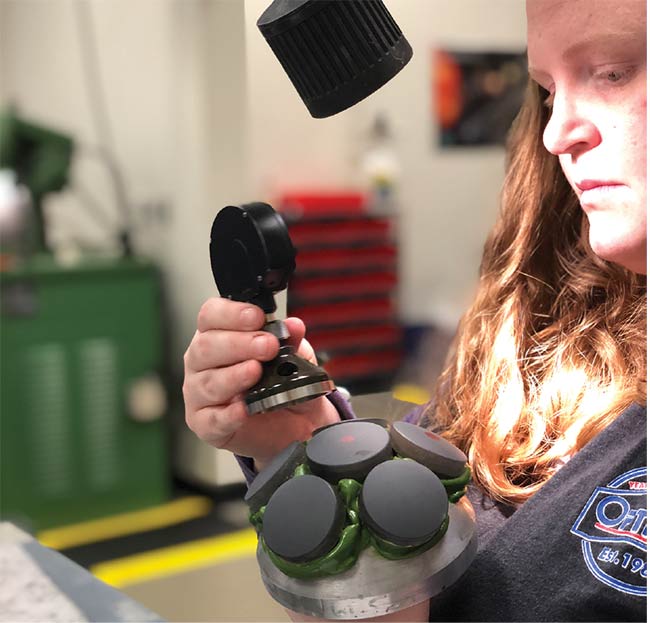
A Monroe Community College student handles a spherometer. Courtesy of Monroe Community College.
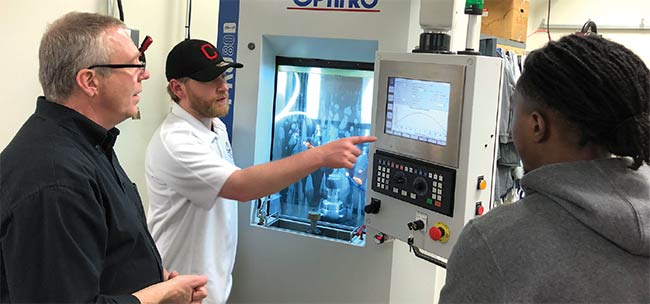
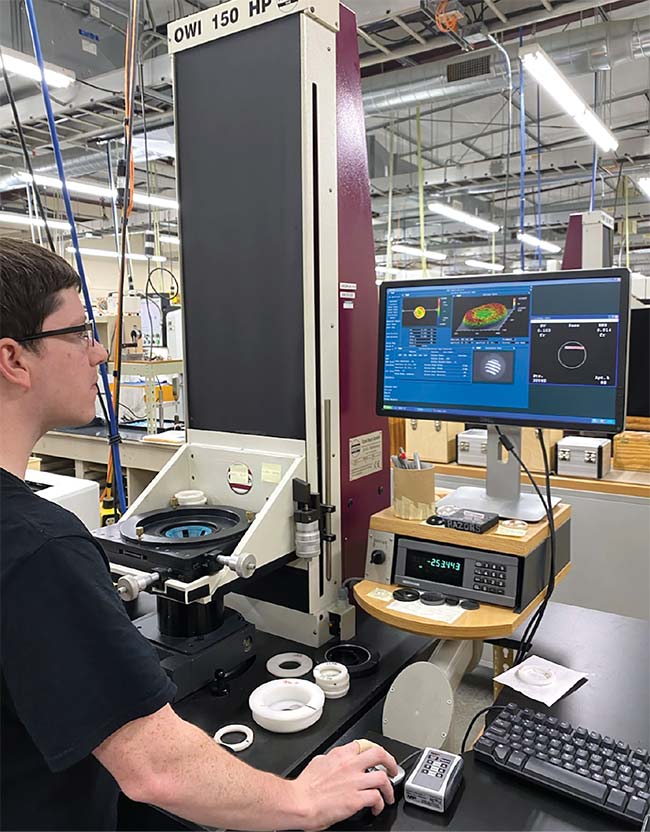
Students in Monroe Community College’s Optical Systems Program Lab gain hands-on training with real-world equipment, such as OptiPro machines. Courtesy of Monroe Community College.
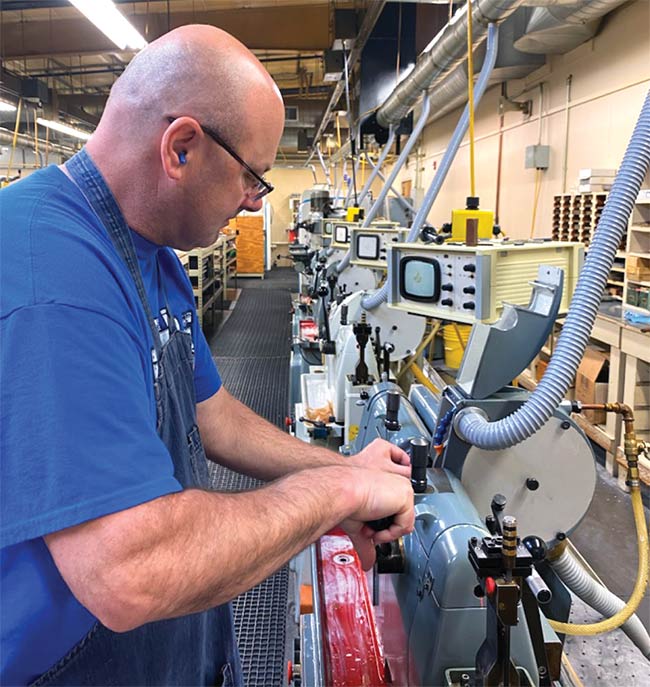
Optical technicians at LaCroix Precision Optics. In 2021 and in partnership with Monroe Community College, LaCroix became the first nationally registered sponsor for a U.S. Department of Labor-based apprenticeship program for optics manufacturing technicians. Courtesy of LaCroix Precision Optics.
“There are no other optics manufacturers in our area, so all of our employees are trained on the job,” said Karen Palmer, LaCroix’s human resources manager. “We have been very fortunate to have long-term employees over the years. Lately, many of those employees have retired or will be retiring soon.”
To enhance the training of its technicians, LaCroix became the first nationally registered sponsor for a U.S. Department of Labor-based apprenticeship program for optics manufacturing technicians. To provide apprentices with the required coursework, LaCroix partnered with MCC for optical classes and the University of Arkansas Community College in Batesville for more general instruction.
LaCroix launched its apprenticeship program in February 2021, and its first two apprentices started working the following August.
As of May 2023, the manufacturer had four active apprenticeships, with two scheduled for completion this summer. LaCroix plans to add two apprentices each year.
“We developed this program with two goals in mind: first to help facilitate the efficient transfer of institutional knowledge from our experienced employees to our next generation technicians, and second, to better prepare the LaCroix
Precision Optics workforce to meet the challenges of future technological
demands,” Palmer said.
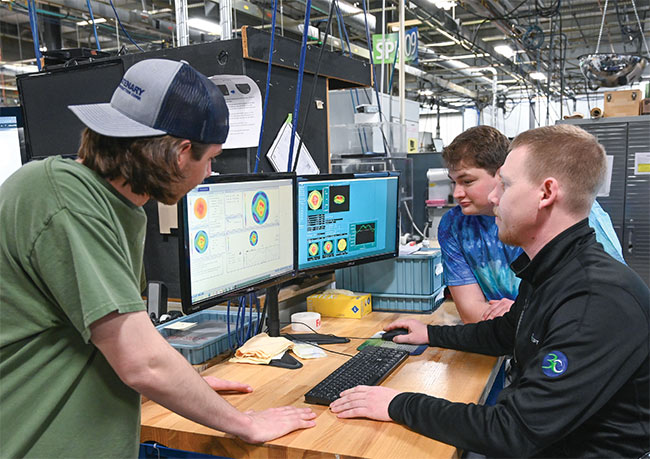
Precision optics manufacturing apprentices convene in a manufacturing cell at Optimax. Courtesy of Optimax.
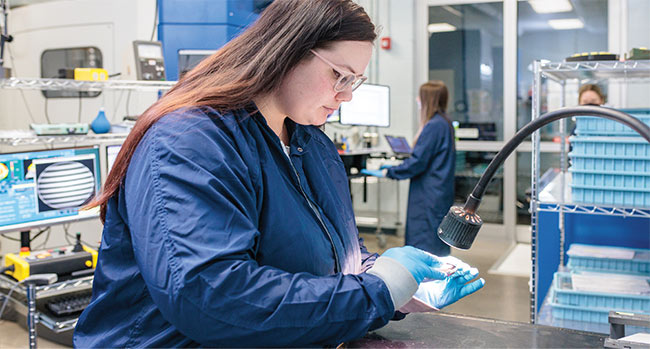
A precision optics manufacturing apprentice working in one of Optimax’s high-end metrology labs located in Ontario, New York. Courtesy of Optimax.
Since August 2022, several other optics companies have also sponsored photonics technician apprenticeships. Archer OpTx in Rockwall, Texas and Esco Optics in Oak Ridge, New Jersey both launched initiatives under the Department of Labor’s program and partnered with MCC to provide online coursework. Other apprenticeship programs leveraging MCC instruction are active at OptiPro Systems and Optimax Systems in Ontario, New York; Thorlabs Lens Systems/JML Optical, Applied Image, and Sydor Optics in Rochester; and Nu-Tek Precision Optical Corporation in Aberdeen, Maryland.
Optimax, the nation’s largest manufacturer of precision optical components was, in 2016, possibly the first U.S. company to launch an apprenticeship program for optical technicians. The company has averaged approximately 40 new hires annually over the last four years and now employs 350 optical technicians out of its 450 staff members. As of May 2023, Optimax had two active apprenticeships, with a new cohort expected to start soon. A total of six employees have completed the apprenticeship program, according to Joseph Spilman, Optimax’s president.
Nearby, Sydor Optics launched its own optical technician apprenticeship program in 2020. It currently has four apprentices and is planning to add two more. Both Sydor and Optimax reported they are not struggling with retention due in part to their apprenticeship opportunities.
The Rochester area could need another 200 technicians in the next 12 months by Spilman’s estimate. “There is room for the program to grow,” he said.
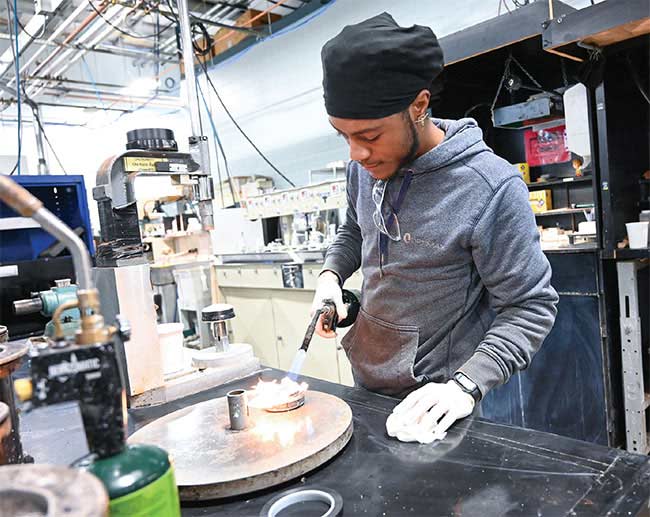
In Ontario, New York, an East High School optics program graduate works with one of Optimax’s spherical manufacturing cells. Courtesy of Optimax.
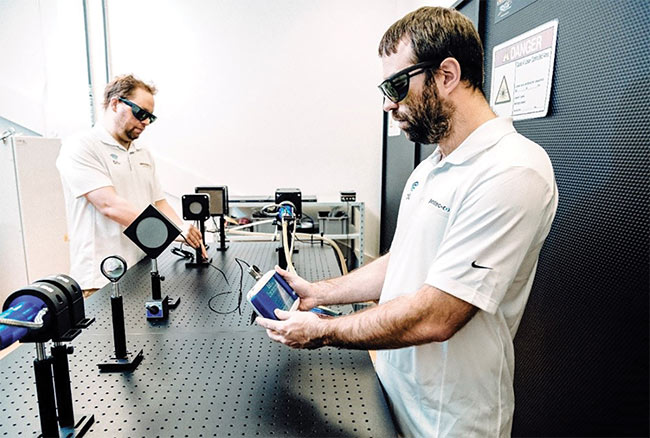
Technicians measure fiber laser power at Gentec-EO. Courtesy of Gentec-EO.
According to Spilman, the quality of the program’s graduates has been good overall, but more support and funding would allow the program to meet the industry’s growing needs without sacrificing the quality of job candidates. “Diluting the student-to-teacher ratio may have a significant negative impact on quality,” he said.
Rochester’s photonics community also needs skills above and beyond optical manufacturing. Spilman said local institutions such as MCC should establish
accredited programs focused on leadership training in technical fields, for example. For his part, Sydor said he wishes institutions provided more education and training in visual inspection as well as metrology of optics.
Appealing to youth
Rochester-area optics manufacturers have also sought to promote industry careers
to a younger audience by looking to local high schools for talent. Cooperative education boards in nearby Western Monroe and Orleans counties, for example, have developed photonics lessons and kits for students in grades 6 to 12, with the high school curriculum aligning with MCC’s optics course.
Across the Canadian border, Québec
manufacturers are also struggling to
fill photonics technician positions.
Optonique, a nonprofit organization that supports Québec’s photonics cluster, conducted a study in 2019 that found lower starting salaries for engineers had devalued the appeal of optical technician jobs. To help address this, Optonique launched partnerships with middle schools and high schools to provide internship opportunities that might increase the visibility and appeal of photonics certificate and degree programs at the college level.
Such programs are available at Québecoi colleges, such as the Cégep André-
Laurendeau and Cégep de La Pocatière. Both offer training in optics and other disciplines as part of their physics engineering curriculum, and each college program awards about 20 degrees per year.
Last April, Optonique helped to keep the pipeline flowing by placing 20 interns at 10 Québec companies.
“Upskilling is vital,” said Matthew Posner, Optonique’s workforce and photonics education director. “There is a recognition by employers that ‘We have to work with what we have.’ Upskilling programs are key to maintaining relevance with new technologies and Optonique is evaluating solutions that would work in our ecosystem.”